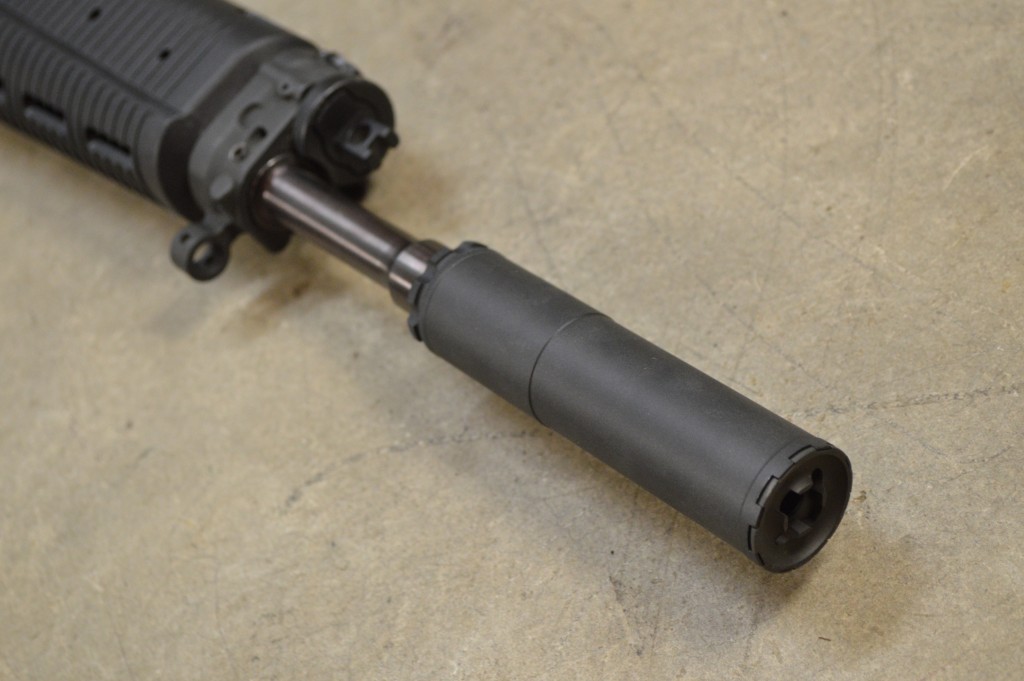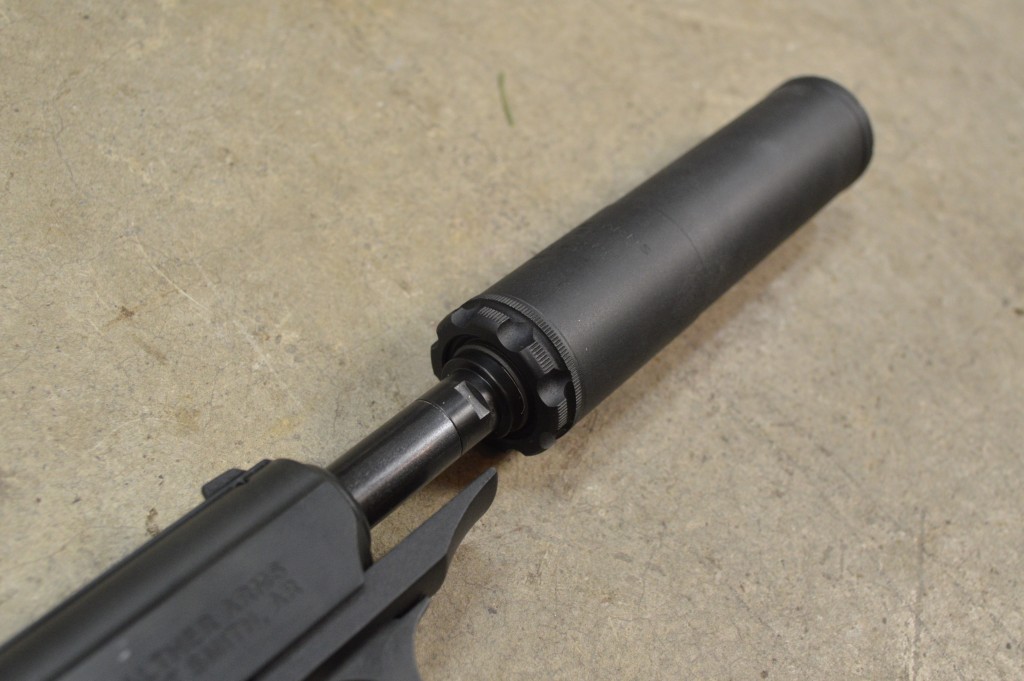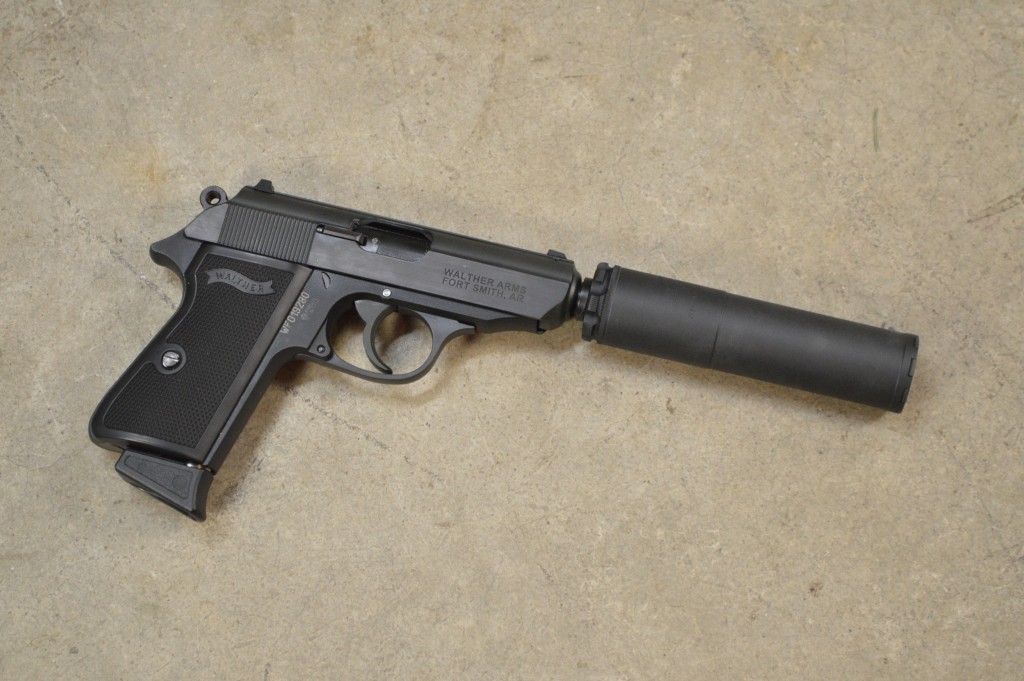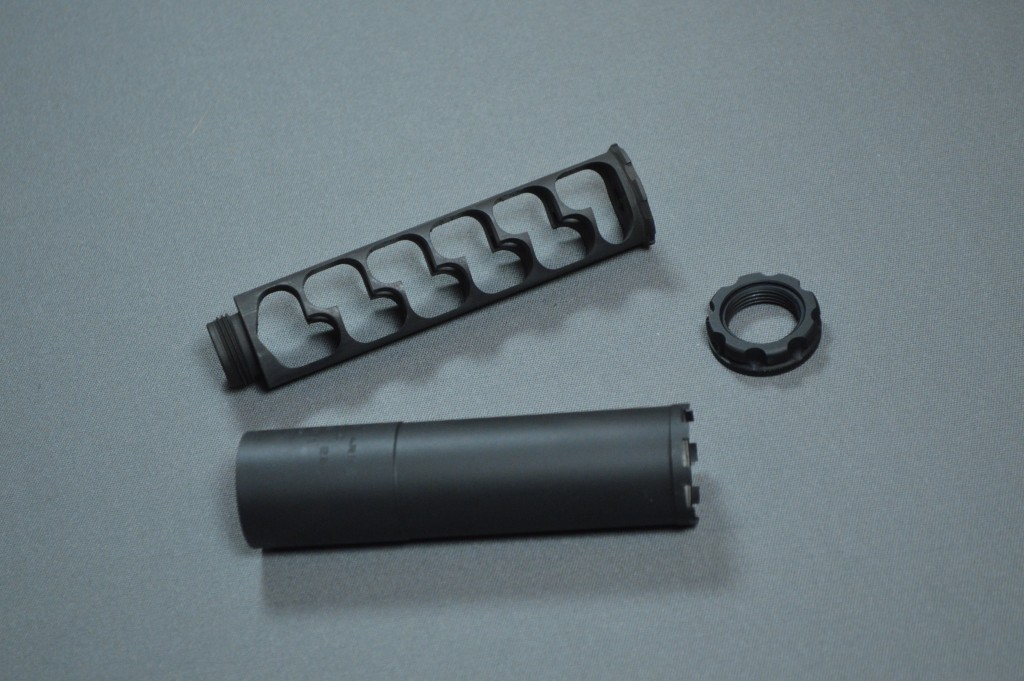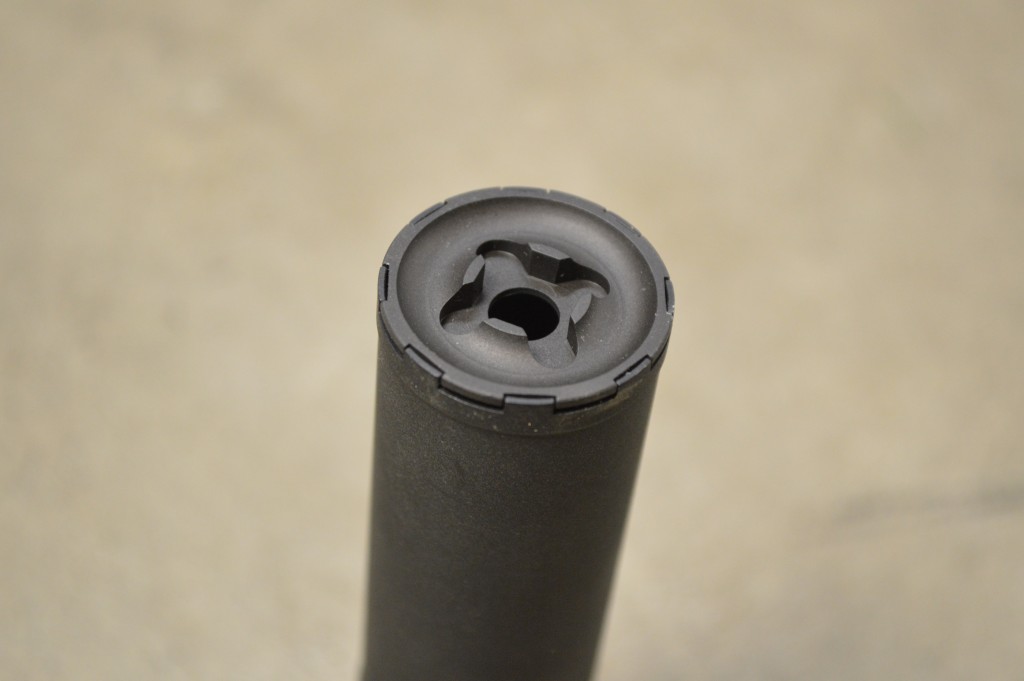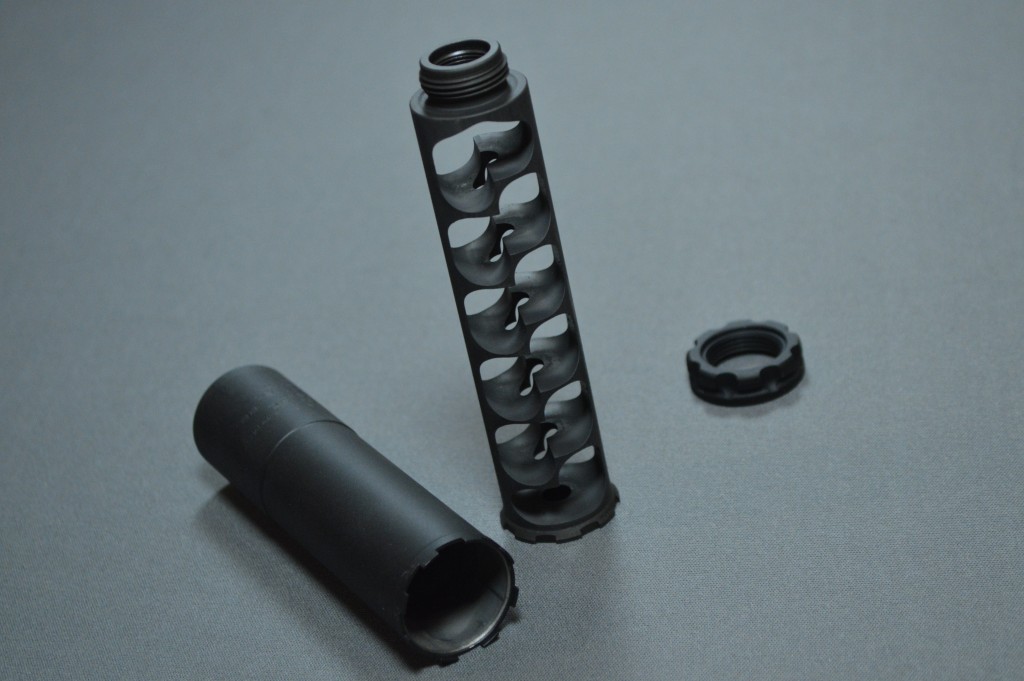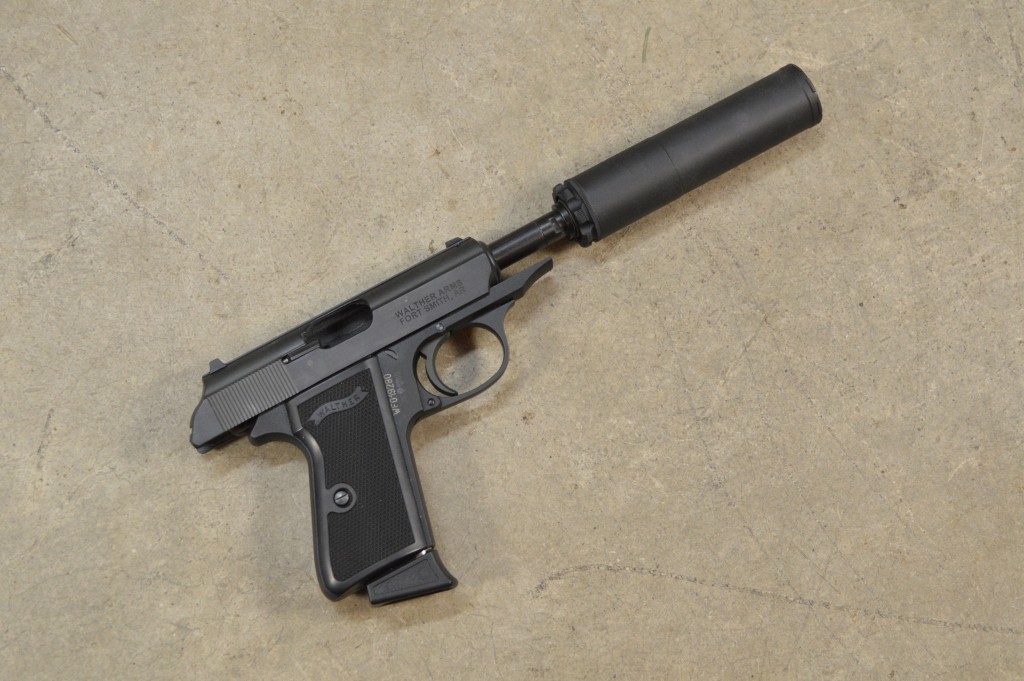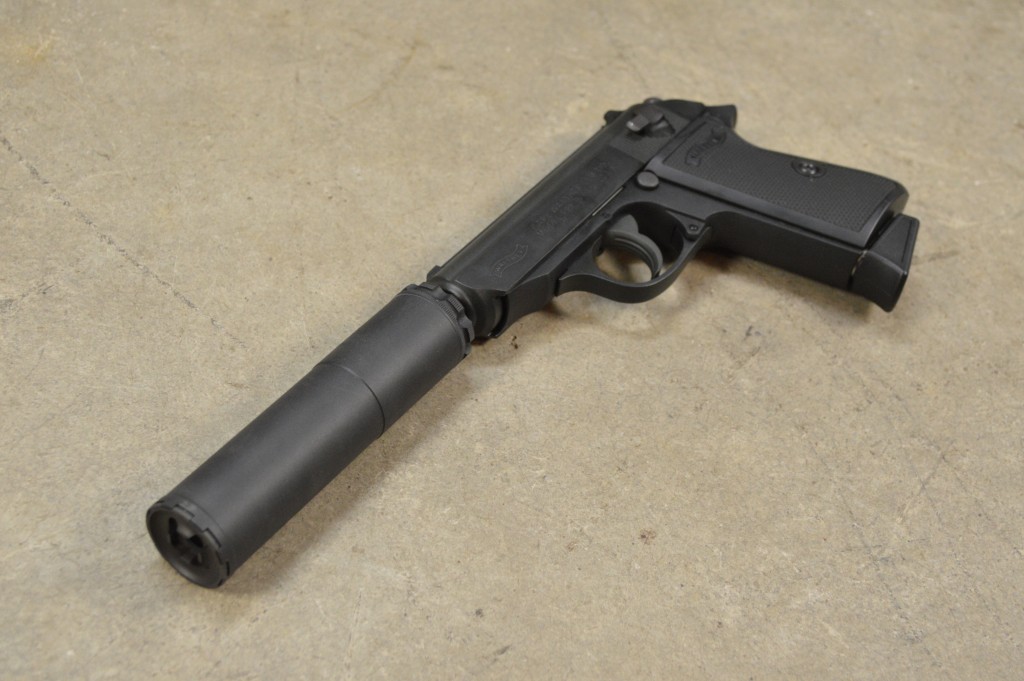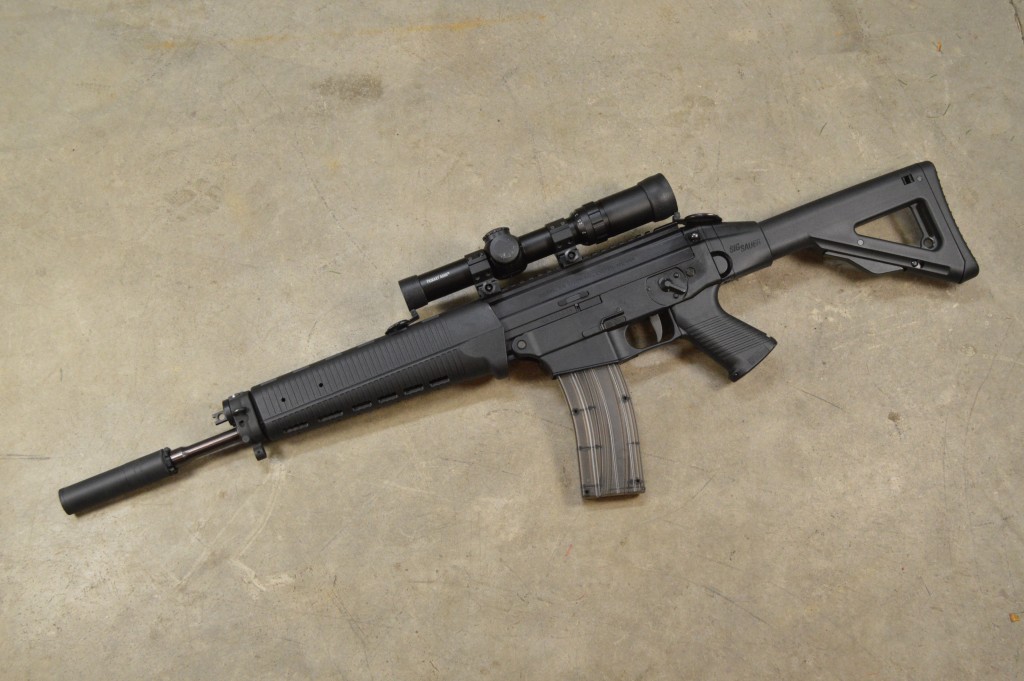Silencer Shop Authority: Innovative Arms Slingshot Review
Over the last several weeks, I’ve spent a lot of time talking about some of the new suppressors from Innovative Arms. Thanks to my friends at Silencer Shop, I’ve had the chance to look at everything from Innovative’s Slingshot Micro .22 suppressor all the way up to their beefy Interceptor 7.62 silencer. Without question, I’ve had a great look at the brand.
Today, we will examine the final suppressor of this set – the standard Slingshot .22 silencer. Just a little larger than the Micro, the full Slingshot offers similar durability along with the promise of improved performance. Keep reading to see how it compares.
Size & Weight
While the Slingshot Micro was the smallest .22 can I’ve tested to date, the regular Slingshot is more in line with other rimfire cans. The silencer’s outer tube is just a bit over 4.5” long and around 1.125” in diameter. That’s a little wider than other .22 silencers, but it doesn’t affect the usability of pistol sights.
The Slingshot may be middle-of-the-road as far as overall size goes, but it is on the upper end of the weight range. Its 6.4-ounce weight is enough to be noticeable on handguns, yet I doubt many will find it objectionable. On a rifle, that isn’t enough to be bothersome.
Materials & Design
There are two versions of the Slingshot: one with a stainless tube and one with a titanium shell. This particular example is the former and as such is one of the most durable .22 silencers you’ll find. Few companies make entirely stainless .22 cans and the Bowers USS and Rugged’s new Oculus 22 are the only comparable options that come to mind. The Slingshot is rated for semi-automatic use with calibers up to 5.7x28mm and full-auto use with .22 LR. Throughout, the suppressor is finished with a durable ceramic paint.
The Slingshot, like the Micro, is one of the easiest monocore suppressors to disassemble. At the rear of the silencer, near the threads, is a retaining ring that can be unscrewed. Once the ring is off, simply give the exposed backside of the core a nice smack with your palm or, if the can is very dirty, a rubber mallet. The core should drop right out. Reassembly is equally simple, and Innovative Arms was wise to include anti-rotation slots at the front of the tube and core. These small grooves resemble battlements on a castle, and they prevent the core from slipping when the silencer is tightened to a barrel or while tightening the retaining ring.
The core of the Slingshot is more or less the same as the Micro, save for an additional baffle for a grand total of five. The Slingshot’s monocore is fairly simple. Each baffle features a mostly flat blast surface with a 90-degree diametric step at their midpoints. Thus the borehole is ovular, which allows gas to flow through the can, but at different speeds and promotes cross-jetting or turbulence to help trap the particles inside the tube. Even for a monocore, the Slingshot features a generous blast chamber.
Range Report
The full-size Slingshot’s most obvious advantage over the smaller Slingshot Micro can be found in its performance on a pistol. The short Micro no doubt looked amazing on rimfire handguns (particularly my PPK/S if you don’t mind me saying). Still, because pistol barrels don’t offer all that much space for complete powder burn, some of the combustion must occur inside the suppressor. With a short can, that poses a problem. The Slingshot Micro was very loud on my Walther and Silencer Shop’s meter values support that, with 136 dB reading just off the muzzle.
In contrast, the Slingshot fared noticeably better. Subjectively, I could tell right away that it was quieter than its smaller brother, but perhaps not as silent as category leaders. Once I got past the first round pop (FRP, more in this in a moment), the Slingshot was rather pleasant, thanks especially to its relatively deep tone. As I noted though, it wasn’t as quiet as some of the top performers I’ve tried, including the AAC Aviator 2, Griffin’s similarly-monocore Checkmate, or Q’s El Camino. Objectively, Silencer Shop has reported that the Slingshot meters at 129 dB on a pistol, or around 6 dB louder than market leaders.
I indicated a moment ago that we would discuss FRP, so let’s do that now. By virtue of their spacious design and baffle style, monocores tend to allow more interaction between burning powder gasses and oxygen trapped inside the can. While most of that oxygen burns up once the first round has been fired, it means that that very first shot sounds louder than subsequent ones. The Slingshot sports a monocore and a rather basic one at that; as such, it, unfortunately, suffers from the phenomenon in a pretty substantial way.
While the Slingshot put up an okay performance on the Walther, it sounded even better on my SIG 522. The FRP that was so noticeable on the pistol effectively disappeared once the can was moved over to the rifle. After the first round, the Slingshot kept up its excellent performance. I had the good fortune of pitting it against Q’s phenomenal El Camino and found that Innovative’s can put up a great showing. It wasn’t until a few days after my range trip that I learned the Slingshot outperforms the El Camino by around 1.5 dB when measured at the shooter’s ear (116.4 dB versus 118 dB). However, the El Camino does win the day just off the muzzle (114.3 dB versus 116.8 dB). Nevertheless, there’s no denying that the Slingshot performs excellently on .22 LR rifles.
I’ll be the first to admit that my accuracy testing with the Slingshot was rather hasty and perhaps not the best measure of the can’s capabilities or effect on a rifle. That said, the silencer did not seem to have an appreciable impact on my SIG’s accuracy or point of impact (POI). For casual shooting, sight adjustments really shouldn’t be necessary.
Conclusion
Innovative Arms’ Slingshot isn’t quite as unique as its smaller sibling, but it is still a quality suppressor. From a durability standpoint, you’re unlikely to find a more rugged .22 can as the Slingshot is made entirely of stainless steel. For a monocore, it is very easy to take apart, and disassembly shouldn’t be a problem, even when the can is very dirty.
Though the Slingshot sounds great on rifles, there is some room for improvement on the performance front. Compared to its rivals, Innovative’s silencer is relatively loud on pistols, and I think the simple monocore is to blame. Furthermore, the company’s decision to use a monocore in the Slingshot means it has far more FRP than stacked baffle designs. As I indicated earlier in the review, the Slingshot is far from a dud, but it could be quieter.
If you’re in the market for a supremely durable .22 suppressor and you don’t care about modularity or simply don’t want to pay for something like Rugged’s more expensive Oculus, the Slingshot might be a solid alternative. Interested shoppers can find Innovative Arms’ stainless Slingshot at Silencer Shop for around $350, depending on Powered By dealer pricing.
An information security professional by day and gun blogger by night, Nathan started his firearms journey at 16 years old as a collector of C&R rifles. These days, you’re likely to find him shooting something a bit more modern – and usually equipped with a suppressor – but his passion for firearms with military heritage has never waned. Over the last five years, Nathan has written about a variety of firearms topics, including Second Amendment politics and gun and gear reviews. When he isn’t shooting or writing, Nathan nerds out over computers, 3D printing, and Star Wars.

